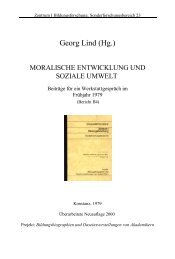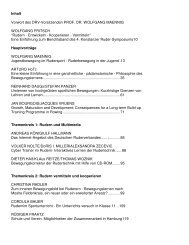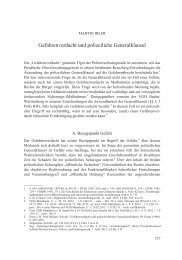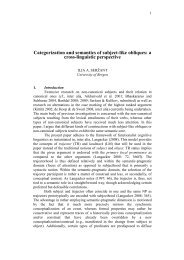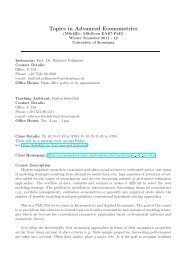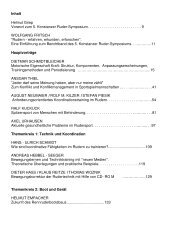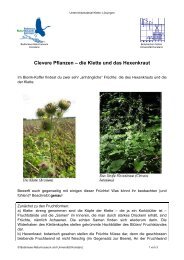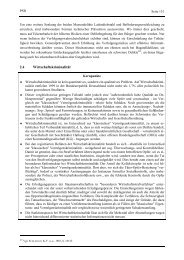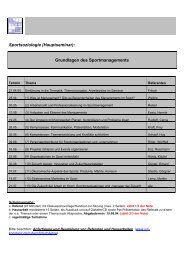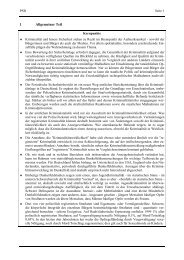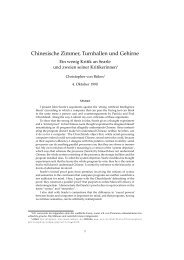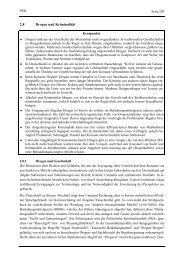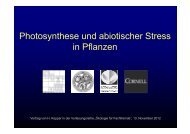Book of Abstracts Book of Abstracts - Universität Konstanz
Book of Abstracts Book of Abstracts - Universität Konstanz
Book of Abstracts Book of Abstracts - Universität Konstanz
You also want an ePaper? Increase the reach of your titles
YUMPU automatically turns print PDFs into web optimized ePapers that Google loves.
B - 16<br />
54<br />
Reactivity <strong>of</strong> Size-Selected Gas-Phase Transition Metal Carbide and<br />
Sulfide Clusters<br />
James Lightstone 1 , Melissa Patterson 1 , Robert J. Beuhler 2 1, 2<br />
, Michael G. White<br />
1 Department <strong>of</strong> Chemistry, Stony Brook University, Stony Brook, NY 11974, USA<br />
2 Chemistry Department, Brookhaven National Laboratory, Upton, NY 11973, USA<br />
We have recently constructed a cluster deposition apparatus which employs a magnetron<br />
sputtering source for generating gas-phase cation clusters <strong>of</strong> pure metals and metallic<br />
compounds. The focus is on generating clusters <strong>of</strong> the early transition metal compounds<br />
(carbide and sulfides), which are known in their bulk form to be active catalysts for a wide<br />
range <strong>of</strong> heterogeneous reactions [1,2]. In many cases, metal carbides <strong>of</strong>fer distinct advantages<br />
over the parent metal in selectivity and resistance to poisoning, and for certain reactions their<br />
catalytic behavior is similar to that <strong>of</strong> the Group 8-10 noble metals [2,3]. Very recent theoretical<br />
calculations also suggest that small carbide clusters, i.e., the Ti8C12 Met-Car and Ti14C13<br />
nanocrystallite, are more reactive than bulk TiC surfaces [4]. The work reported here examines<br />
the gas-phase reactivity <strong>of</strong> small transition metal carbide and sulfide clusters as a first step<br />
towards investigations <strong>of</strong> model catalysts prepared by size-selected deposition.<br />
Ion beams containing a wide array <strong>of</strong> transition metal compound clusters, TxMy + (T ≡ Ti,<br />
Mo, Zr, Nb; M ≡ C, S), were generated using a magnetron sputtering source, including “magic”<br />
number species such as the Ti8C12 + Met-Car. The gas-phase reactivity <strong>of</strong> mass-selected TxMy +<br />
clusters was studied using a hexapole collision cell, into which reactive gases were introduced,<br />
and a second quadrupole mass filter for product detection. Results will be presented for the<br />
adduct formation and reactions <strong>of</strong> the Ti8C12 + Met-Car with a variety <strong>of</strong> sulfur containing<br />
molecules, such as OCS shown in the accompanying figure below. In addition, we will also<br />
present results on the reactivity <strong>of</strong> MoxSy + clusters and future plans for size-selected cluster<br />
deposition. This work was supported by the U.S. Department <strong>of</strong> Energy, Office <strong>of</strong> Basic Energy<br />
Sciences, Division <strong>of</strong> Chemical Sciences under contract No. DE-AC02--98CH10886<br />
Figure 1. Mass spectrum <strong>of</strong> the reaction<br />
products resulting from collisions between<br />
Ti8C 12 + and OCS at 300K. .<br />
References<br />
500 600 700 800 900 1000<br />
[1] J.G. Speight, The Chemistry and Technology <strong>of</strong> Petroleum, second ed., New York, McGraw-Hill,<br />
1991.<br />
[2] Chen, J. G., Chem. Rev. 1996, 96, 1477; Oyama, S. T., Catal. Today 15, 179 (1992).<br />
[3] Levy, R. L.; Boudart, M., Science 181, 547 (1973).<br />
[4] H. Hou, J. T. Muckerman, P. Liu and J. A. Rodriguez, J. Phys. Chem. 107, 9344 (2003); P. Liu and<br />
J. A. Rodriguez, J. Chem. Phys. 119, 10895 (2003).<br />
Intensity<br />
1.20E-008<br />
1.00E-008<br />
8.00E-009<br />
6.00E-009<br />
4.00E-009<br />
2.00E-009<br />
0.00E+000<br />
Ti 8 C 12<br />
Ti 8 C 12 + S<br />
Ti 8 C 12 + SCO<br />
Ti 8 C 12 + S(SCO) 3<br />
Mass<br />
Ti 8 C 12 + S(SCO) 5



